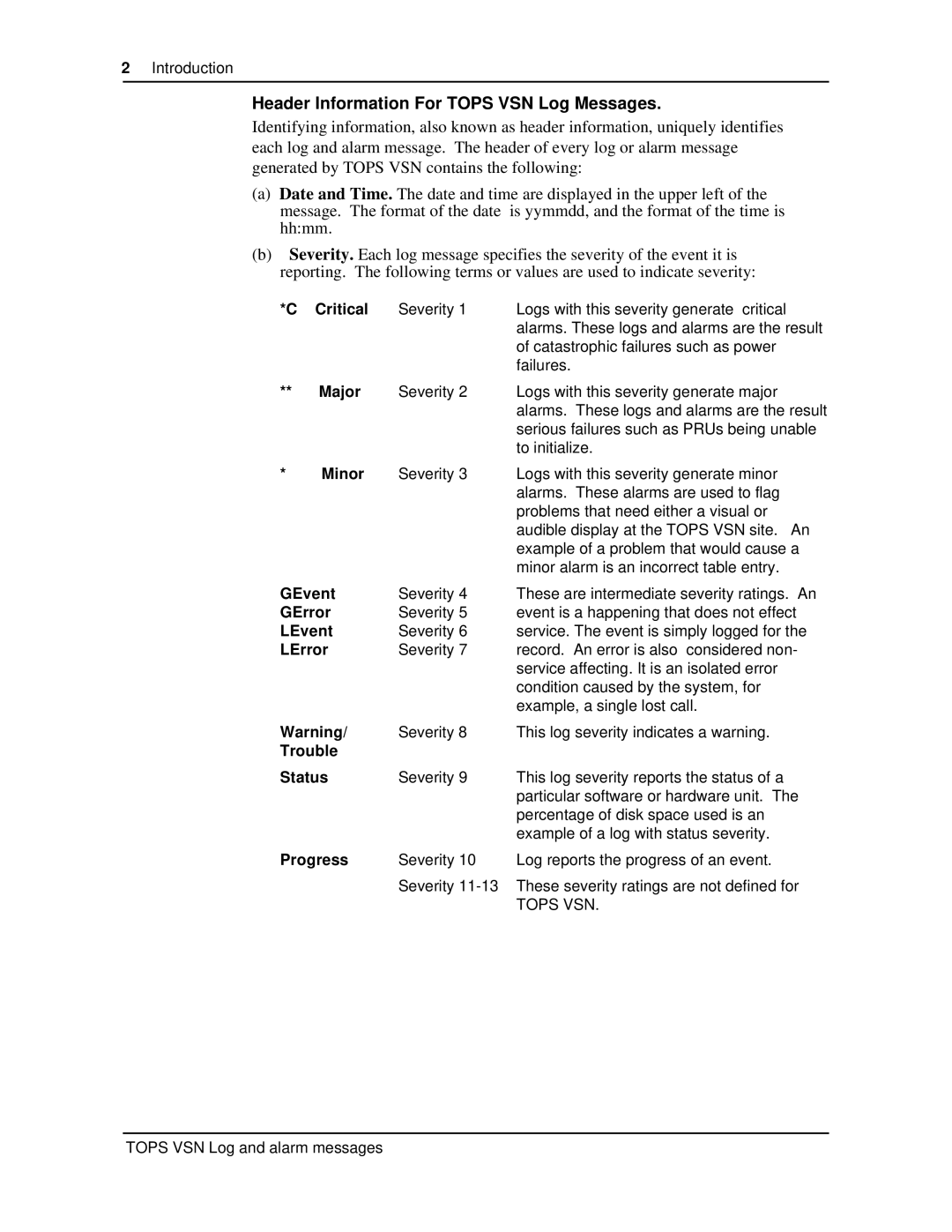
2Introduction
Header Information For TOPS VSN Log Messages.
Identifying information, also known as header information, uniquely identifies each log and alarm message. The header of every log or alarm message generated by TOPS VSN contains the following:
(a)Date and Time. The date and time are displayed in the upper left of the message. The format of the date is yymmdd, and the format of the time is hh:mm.
(b)Severity. Each log message specifies the severity of the event it is reporting. The following terms or values are used to indicate severity:
*C | Critical | Severity 1 | Logs with this severity generate critical |
|
|
| alarms. These logs and alarms are the result |
|
|
| of catastrophic failures such as power |
|
|
| failures. |
** | Major | Severity 2 | Logs with this severity generate major |
|
|
| alarms. These logs and alarms are the result |
|
|
| serious failures such as PRUs being unable |
|
|
| to initialize. |
* | Minor | Severity 3 | Logs with this severity generate minor |
|
|
| alarms. These alarms are used to flag |
|
|
| problems that need either a visual or |
|
|
| audible display at the TOPS VSN site. An |
|
|
| example of a problem that would cause a |
|
|
| minor alarm is an incorrect table entry. |
GEvent | Severity 4 | These are intermediate severity ratings. An | |
GError | Severity 5 | event is a happening that does not effect | |
LEvent | Severity 6 | service. The event is simply logged for the | |
LError | Severity 7 | record. An error is also considered non- | |
|
|
| service affecting. It is an isolated error |
|
|
| condition caused by the system, for |
|
|
| example, a single lost call. |
Warning/ | Severity 8 | This log severity indicates a warning. | |
Trouble |
|
| |
Status | Severity 9 | This log severity reports the status of a | |
|
|
| particular software or hardware unit. The |
|
|
| percentage of disk space used is an |
|
|
| example of a log with status severity. |
Progress | Severity 10 | Log reports the progress of an event. | |
|
| Severity | |
|
|
| TOPS VSN. |
